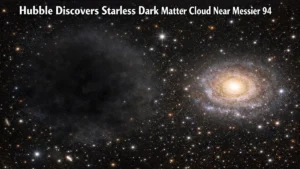Dr. S. Somanath, Chairman of the Indian Space Research Organisation (ISRO), has been honored with the prestigious International Astronautical Federation (IAF) World Space Award. This accolade was awarded in recognition of the remarkable success of Chandrayaan-3, India’s lunar mission that made history with its soft landing on the Moon’s South Pole. The award ceremony took place in Milan, Italy, and marked a significant milestone in India’s growing prominence in space exploration.
Chandrayaan-3: A Groundbreaking Lunar Mission
The Chandrayaan-3 mission, which successfully landed near the Moon’s South Pole on August 23, 2023, placed India in the global spotlight. It made India the first nation to achieve a landing at the lunar South Pole, a region that had eluded previous attempts by other nations. With this feat, India joined an elite group of countries capable of successfully landing on the Moon, which includes the United States, Russia, and China.
Chandrayaan-3’s success was not only a testament to India’s technological advancements but also a demonstration of its growing role in space exploration. The mission provided critical scientific data, including the detection of sulfur and other essential elements in the lunar soil, which could play a pivotal role in understanding the Moon’s composition and its potential for future exploration.
Leadership of Dr. S. Somanath: Guiding the Mission to Success
The success of the Chandrayaan-3 mission is largely attributed to the leadership of Dr. S. Somanath, who serves as both the Secretary of the Department of Space and the Chairman of ISRO. Dr. Somanath’s visionary guidance played a crucial role in steering the mission to its historic accomplishment. Under his leadership, ISRO was able to overcome the challenges faced by its predecessor, Chandrayaan-2, which had experienced difficulties during its landing attempt in 2019.
Dr. Somanath’s approach to the mission was characterized by meticulous planning, innovation, and unwavering determination. His efforts ensured that Chandrayaan-3 was not only a technical success but also a symbol of India’s growing capabilities in space science and technology.
International Recognition: The IAF World Space Award
The IAF World Space Award is one of the most prestigious honors in the field of space science and exploration. It recognizes outstanding contributions to the advancement of space technology and exploration. By awarding this distinction to Dr. Somanath and the Chandrayaan-3 mission, the International Astronautical Federation highlighted the global significance of India’s achievements in space exploration.
This recognition celebrates India’s contributions to the exploration of the Moon and its role in advancing our understanding of Earth’s closest celestial neighbor. It also acknowledges the scientific breakthroughs that Chandrayaan-3 has facilitated, particularly in the study of the Moon’s South Pole, which holds critical potential for future exploration missions.
Chandrayaan-3: A New Era for Lunar Exploration
The success of Chandrayaan-3 has set the stage for further lunar exploration by India and the global space community. The data collected during the mission, especially from the lunar surface, has opened new avenues for scientific research and potential resource utilization. The discovery of elements like sulfur is particularly promising, as it could lead to future advancements in understanding the Moon’s geology and the possibility of establishing sustainable outposts on the lunar surface.
Chandrayaan-3’s success also underscores India’s technical expertise in executing complex space missions with limited resources, positioning the country as a leader in cost-effective space exploration. This achievement has further solidified India’s reputation as a key player in shaping the future of space research and exploration.
Inspiring a New Generation of Scientists and Engineers
One of the most profound impacts of Chandrayaan-3’s success is the inspiration it has provided to young scientists and engineers in India. The mission has captured the imagination of the nation, boosting interest in STEM fields (Science, Technology, Engineering, and Mathematics) across the country. It has also ignited a sense of pride and ambition among the next generation, who see space exploration as a pathway to innovation and global leadership.
Expanding International Collaborations
Chandrayaan-3 has also created new opportunities for international collaborations in space exploration. With India emerging as a key player in the global space community, there are increasing opportunities for partnerships with other space agencies and organizations. These collaborations can lead to joint missions, sharing of technological expertise, and a unified effort to explore not just the Moon but other celestial bodies as well.
India’s success with Chandrayaan-3 has positioned it as a vital partner in future lunar exploration endeavors and potentially in missions to Mars and beyond. The mission’s success has already garnered interest from other space-faring nations looking to collaborate with India on future projects.
ISRO’s Future Ambitions
With the success of Chandrayaan-3, ISRO has demonstrated its capability to execute complex missions and has set its sights on even more ambitious goals. The organization is now preparing for its upcoming mission to explore Mars, and potentially other planetary bodies in the solar system. ISRO’s focus remains on advancing space science, technology, and exploration, while continuing to inspire the world with its cost-effective and innovative approach to space missions.
Summary of the News
| Summary/Static | Details |
| Why in the news? |
|
| Previous Winners | 2021: Hayabusa2 Team, from JAXA, Japan |
| Static |
|




 MeitY Launches PARAM SHAKTI Supercomputi...
MeitY Launches PARAM SHAKTI Supercomputi...
 Hubble Discovers Starless Dark Matter Cl...
Hubble Discovers Starless Dark Matter Cl...
 Scientists Develop Breakthrough Techniqu...
Scientists Develop Breakthrough Techniqu...







